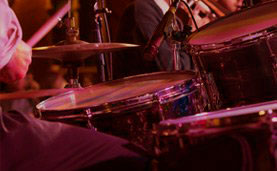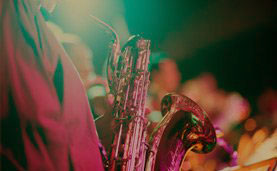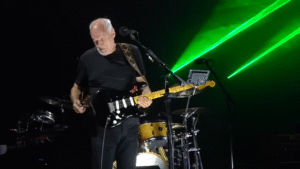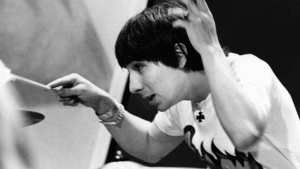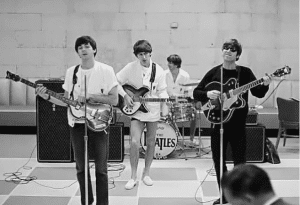Roger Waters Reveals The Only Life-Changing Song He Heard

via Roger Waters / Youtube
Robert Allen Zimmerman, who would later adopt the moniker Bob Dylan, started his career in 1959, a time of shifting tides in the music industry that would take a momentous leap forward during the 1960s.
Initially gaining fame as a folk artist, he rose to prominence through his protest songs. Subsequently, he ventured into playing the electric guitar, which injected a fresh dimension into his compositions.
His musical creations served as a wellspring of inspiration for countless generations of musicians. Among these artists, none stand out more prominently than Roger Waters, the former Pink Floyd bassist and vocalist, whose life and musical journey were significantly shaped by a Bob Dylan track.
During a 2012 interview with Howard Stern, Waters cited the Bard’s song “Sad-Eyed Lady of the Lowlands” as the tune that “changed his life”, in more ways than being just an inspiration.
“When I heard that, I thought, ‘Wow’, if Bob can do it, I can do it,” the former prog rock frontman said.
Bob Dylan influencing Pink Floyd’s lengthy epics
This revelation is quite astonishing from a progressive rock icon like Waters, whose musical style appears to be in a different universe from Dylan’s bluegrass folk. However, it’s not merely the genre of music itself but the storytelling approach that struck a chord with Waters.
The sprawling “Sad-Eyed Lady of the Lowlands”, which boasts an impressive length of 11 and a half minutes, wasn’t just a personal favorite for Waters; it was a profound source of inspiration. Waters expressed his admiration for the song’s audacious duration.
In Waters’ view, rather than becoming tedious, the song becomes increasingly captivating as it unfolds, growing “more and more hypnotic the longer it plays.”
Dylan’s influence on Waters extended beyond mere inspiration. Over the years, Waters has paid tribute to Dylan by covering some of his songs, entertaining audiences with live renditions of “Forever Young” at some concerts.
Notably, Waters’ previously unreleased studio rendition of “Knocking On Heaven’s Door” was the first track off his 2002 compilation album Flickering Flame: The Solo Years Volume 1.
David Gilmour and The Bard
It wasn’t just Waters who saw Dylan as a beacon of influence. Another prominent Pink Floyd member who loved Dylan, and even interacted with him in later years, was the legendary guitarist David Gilmour.
When Dylan started using an electric guitar, he faced criticism from many fans for “going electric.” However, Gilmour had a different perspective. In a 2006 interview with The Guardian, Gilmour reminisced about how Dylan had influenced him during his youth and how he appreciated Dylan’s shift to electric guitar.
View this post on Instagram
“To me, I was never one of the people who thought Dylan was a monster for going electric. I liked the change. But I must say the power of the young Dylan as the acoustic-playing protest singer – which he’s always denied. But sorry Bob, you were a protest singer.”
He continued to praise Dylan’s musical abilities, emphasizing the impact of his guitar playing and the way his words and melodies effortlessly connected with audiences. Gilmour marveled at Dylan’s talents, past and present.
Curiously, Dylan himself reciprocated the band’s love and expressed his admiration for some of Pink Floyd’s classic hits.
Gilmour revisited a memorable encounter in a 2003 interview with Record Collector magazine. Over the course of his career, he had the privilege of meeting the folk icon on several occasions, and he was delighted when Dylan offered praise for Pink Floyd.
Gilmour recounted, “The second time we met was around the time of The Delicate Sound Of Thunder. He said (in a spot-on Dylan accent) ‘Hey, I love your record, ‘The Dogs’, man’. I was so thrilled. Not many Pink Floyd fans like this track. But Bob does. So it was OK with me.”
The song “Dogs,” which Dylan mentioned, is among the most highly acclaimed tracks from the iconic 1977 album Animals. This album drew inspiration from George Orwell’s literary work Animal Farm and also features well-known songs such as “Sheep” and “Pigs (Three Different Ones)”.
“Sad-Eyed Lady of the Lowlands”
And all of the sprawling Pink Floyd epics, all of those prog tracks that captured the imagination of fans for their storytelling despite their length, owe their magic to “Sad-Eyed Lady of the Lowlands”.
The song is the closing track on Dylan’s 1966 album Blonde on Blonde. Apart from its extended length, this song is known for its poetic lyrics and intricate instrumentation, making it one of Dylan’s most celebrated compositions.
The Bard wrote “Sad-Eyed Lady of the Lowlands” during a creative burst in early 1966, while he was living in Woodstock, New York. This period marked a pivotal moment in Dylan’s career, as he was transitioning from his folk and protest songwriting phase to a more experimental and poetic style.
He had recently gone through personal and artistic transformations, including his decision to “go electric” at the Newport Folk Festival in 1965.
The song is often interpreted as a love letter to his then-wife, Sara Lownds (formerly Sara Dylan), whom he had married in 1965. The “Sad-Eyed Lady” in the song may be a reference to her, and the “Lowlands” could symbolize the town of Lowndes County, Alabama, which holds significance for Dylan and Sara.
However, Dylan has been characteristically cryptic about the song’s meaning, and its lyrics are rich in metaphor and symbolism.
Some observant fans and critics also alluded that the song was for another folk icon, Dylan’s former flame Joan Baez. Baez personally believed that the song was referencing her; citing that, starting in 1959, she had been performing a song titled “Lowlands” in her setlist.
View this post on Instagram
The said rendition of “Lowlands” was even featured on the collaborative album Folksingers ‘Round Harvard Square from the same year, many years before the recording of Blonde on Blonde. Baez would later cover “Sad-Eyed Lady of the Lowlands” for her 1968 album Any Day Now.
Whatever the real story was, “Sad-Eyed Lady of the Lowlands” will always have its special place in history as a masterpiece of Dylan that showcases his songwriting prowess during a critical period in his career.


